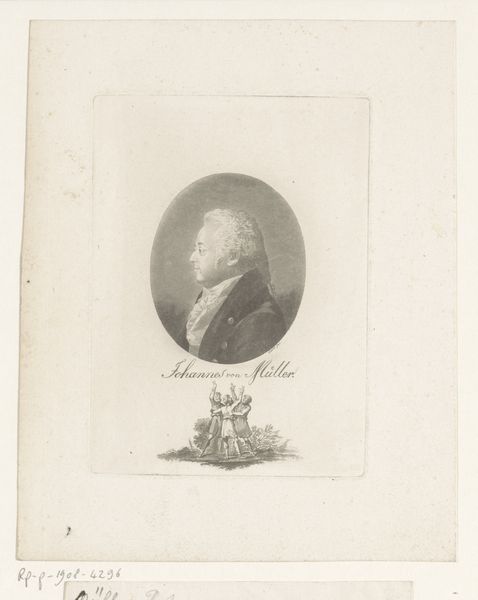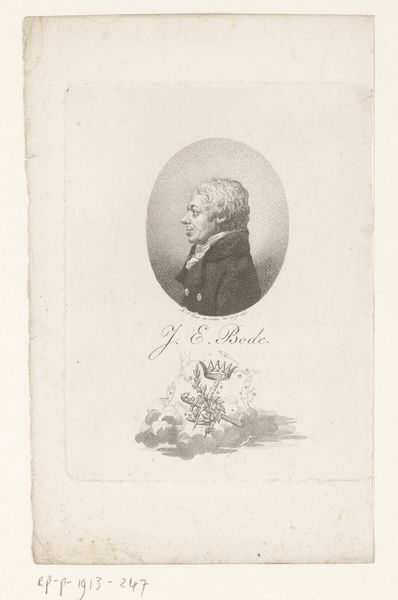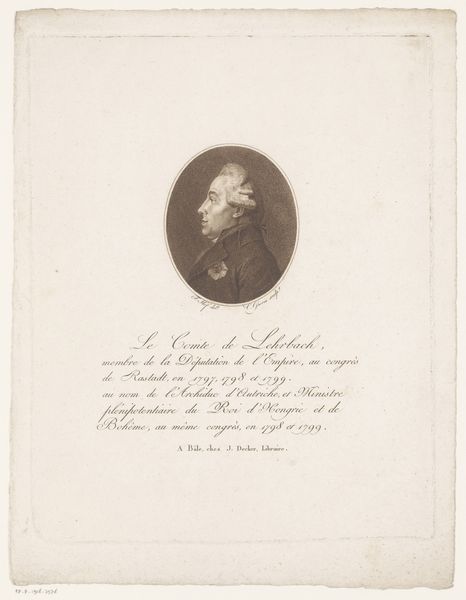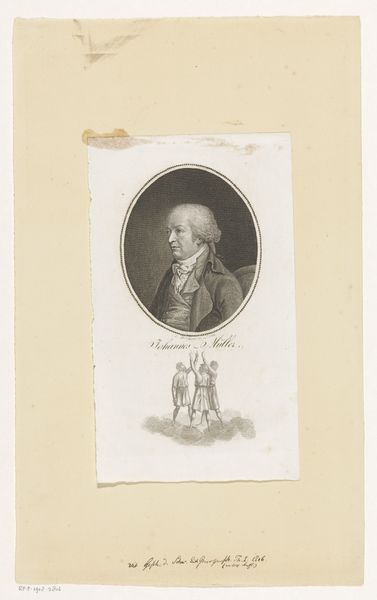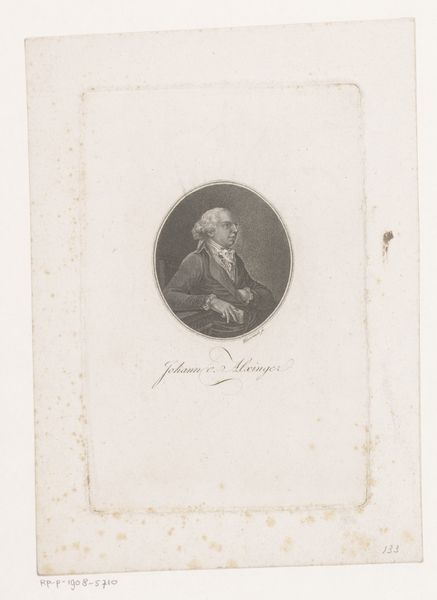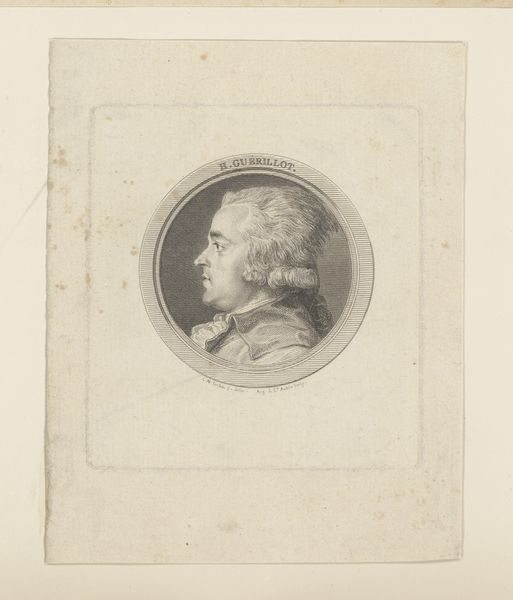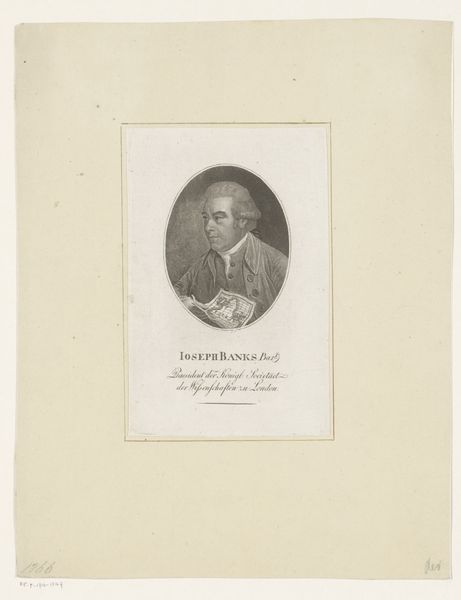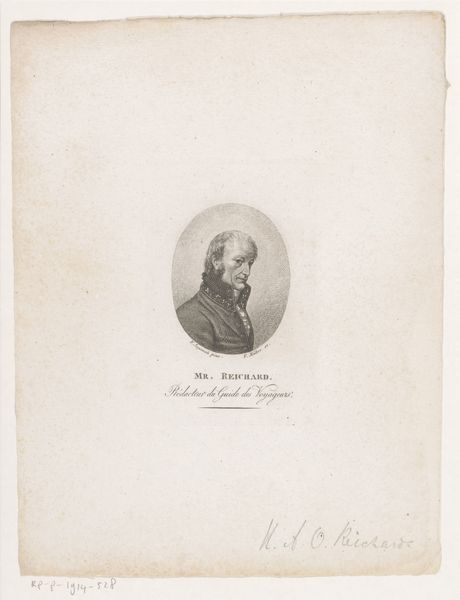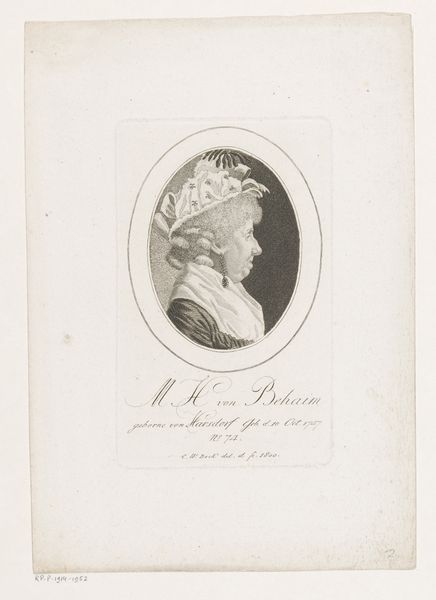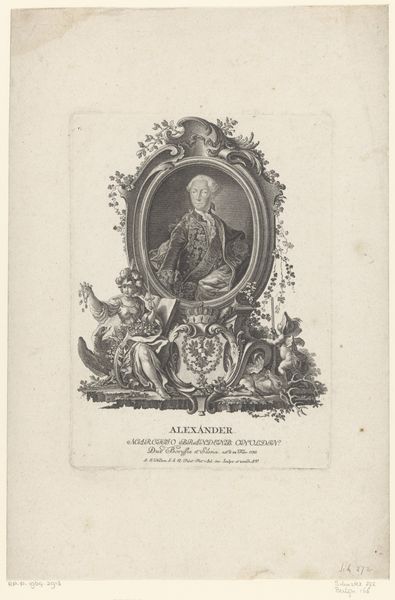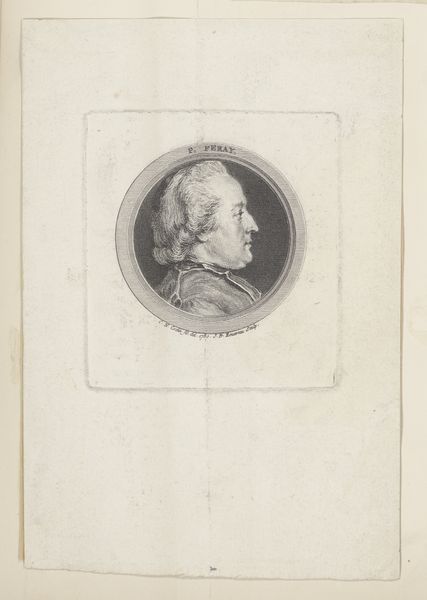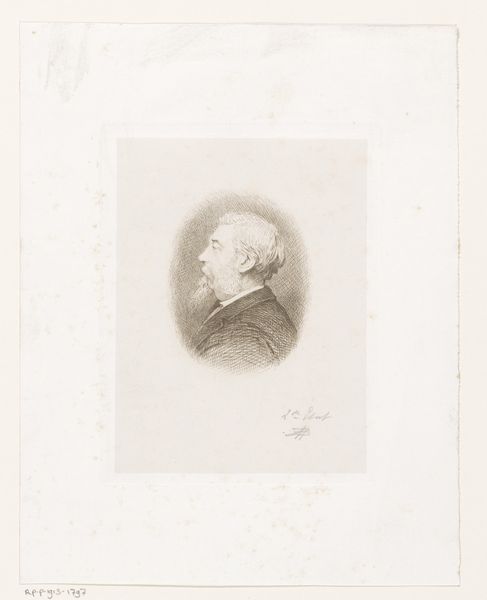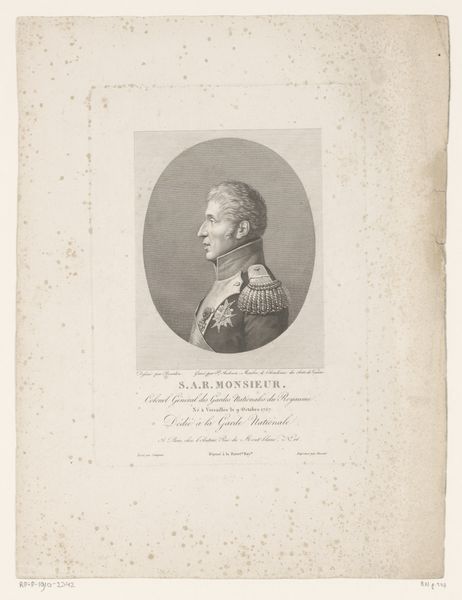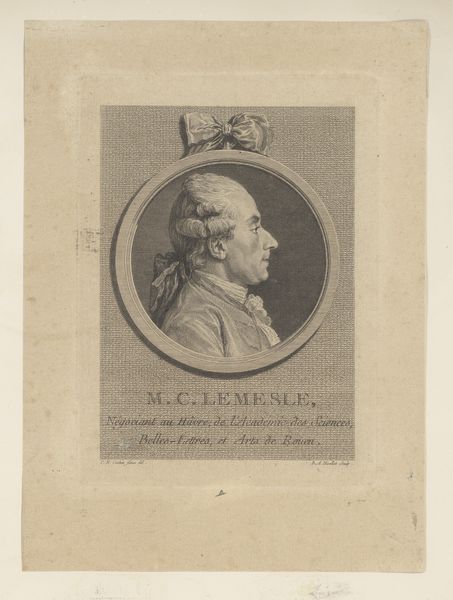
drawing, print, engraving
#
portrait
#
drawing
#
neoclacissism
# print
#
engraving
Dimensions: height 155 mm, width 126 mm
Copyright: Rijks Museum: Open Domain
Curator: Here we have a print entitled "Portret van Johannes von Müller," made around 1805 by Johann Michael Siegfried Lowe. It’s currently part of the Rijksmuseum collection. It appears to be an engraving. Editor: It gives off an austere yet intellectual aura. The figure is neatly presented within an oval frame. The minimal detail and muted tones enhance the portrait's formal and reserved character. But there is some strange composition going on here too. Curator: Yes, that air of reserve is typical of Neoclassical portraiture, particularly in renderings of significant intellectual figures like Müller. What grabs me about this engraving is the interesting choice Lowe made regarding how Müller’s status as an intellectual is conveyed. Engravings were a popular means of disseminating images and ideas at this time, effectively crafting and controlling public personas. Editor: Agreed, but what’s the significance of those miniature figures at the bottom? They’re quite jarring given the overall composure of the portrait. Curator: Precisely! Their inclusion, seemingly unrelated at first glance, disrupts the expected solemnity. Look closely; they appear to be dancing, perhaps figures from classical mythology? Or, more likely, representing figures from one of Müllers published texts or other allegorical representations of Enlightenment ideals. In either case, by positioning these figures in this way, Lowe elevates Müller by associating him with high culture and timeless philosophical pursuits. Editor: But could we read these figures also as representations of popular support for Müllers ideas, especially during the political upheavals of the early 19th century? Was Lowe trying to portray Muller as not just an intellectual but also a figure of popular appeal? Curator: It’s an astute point. Engravings, because of their reproducibility, also existed within a commercial sphere, and popularity absolutely played a role in determining who was represented and how. But to return to the portraiture, Müller's face is etched with such detail, it conveys seriousness. Editor: Indeed, a seriousness reflective of a transformative period. While Löwe uses traditional modes of portraiture, he subtly challenges viewers to consider the relationship between intellectual elites, artistic representation, and broader social movements. It leaves you wondering, what was the wider public perception of Müller at this time? Curator: This work exemplifies the role art plays in mediating these relationships—illustrating both the grandeur of intellectual legacy and its accessibility through image dissemination. Editor: Ultimately, Löwe has offered us more than just a portrait; it’s an invitation to explore the nuanced interplay between image, identity, and public perception in the era of Enlightenment.
Comments
No comments
Be the first to comment and join the conversation on the ultimate creative platform.
